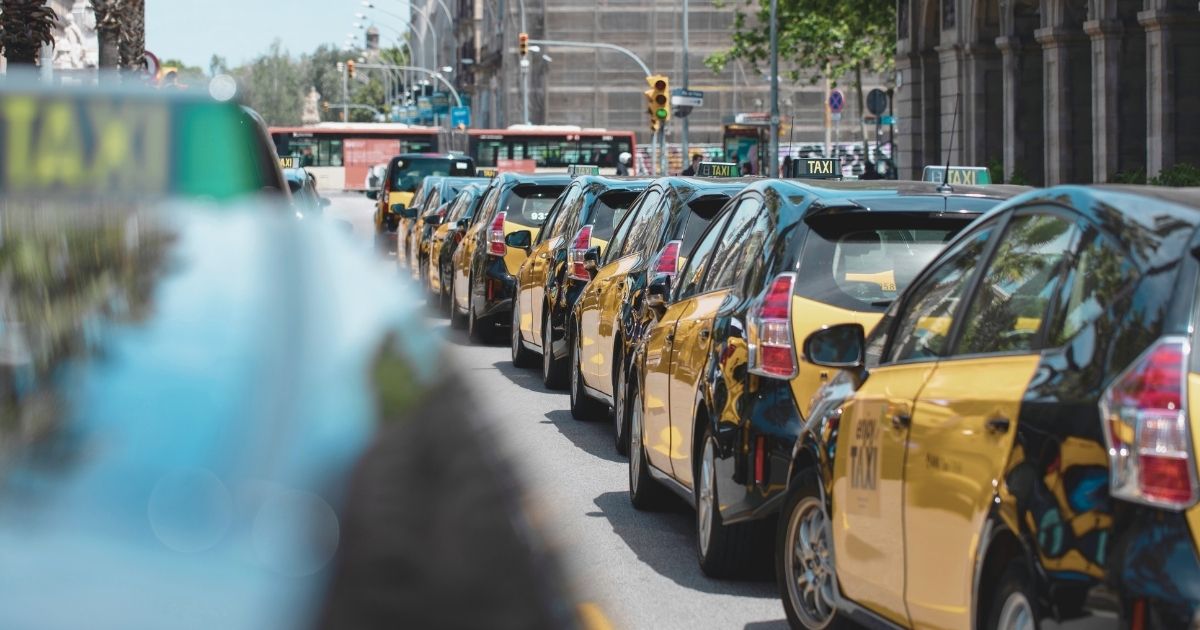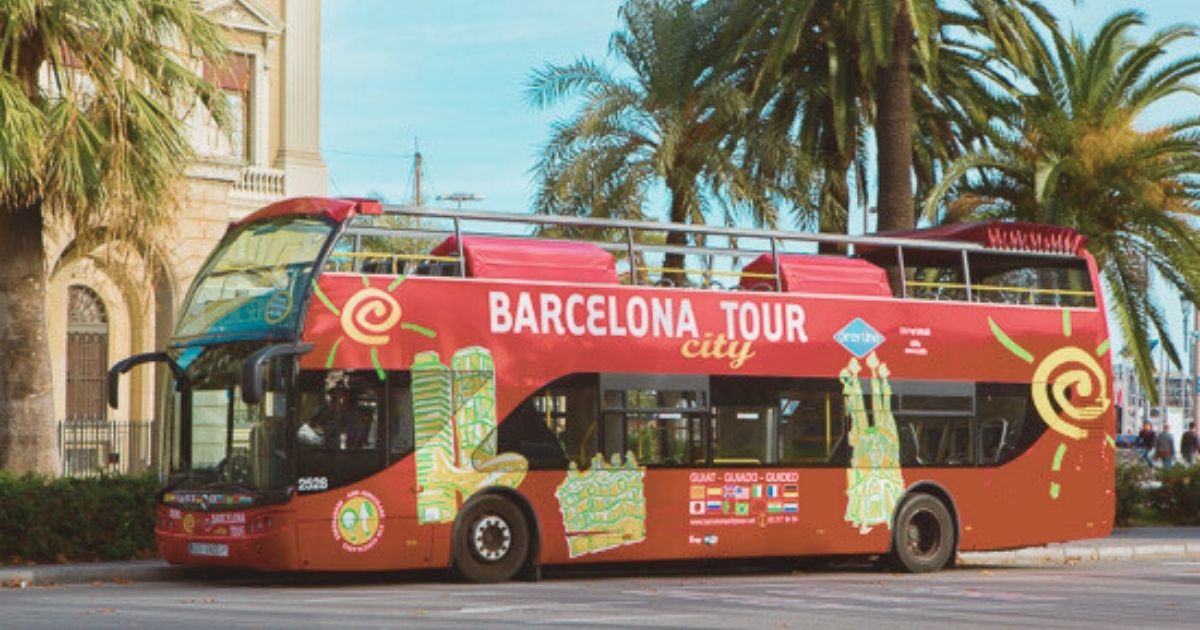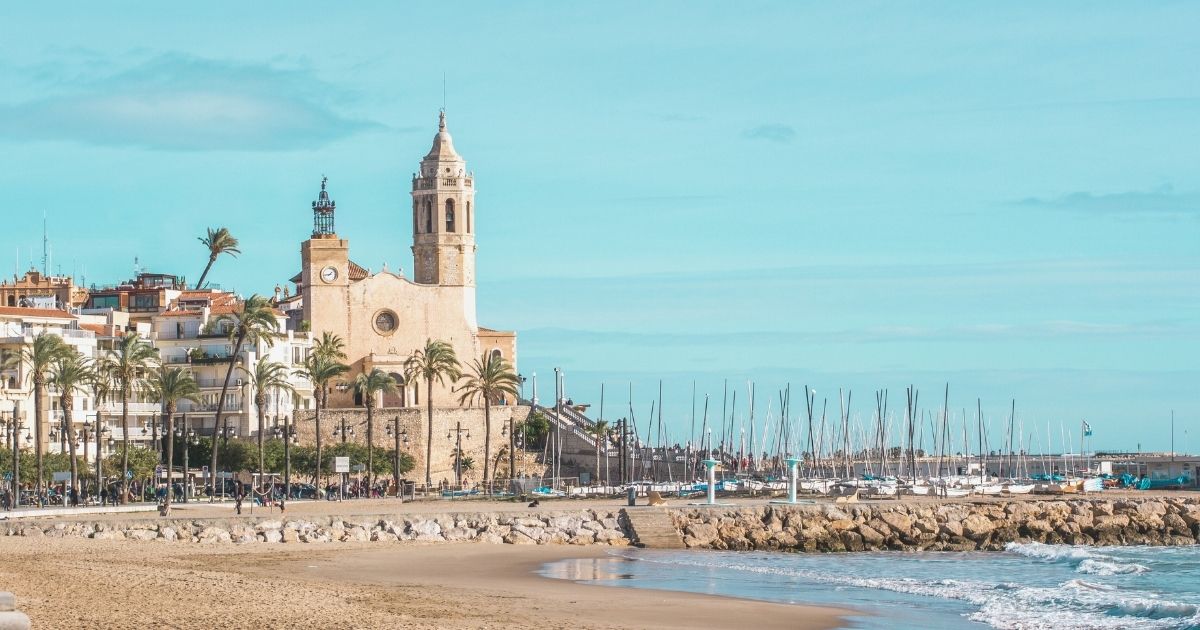Navigating Barcelona’s vibrant streets becomes effortless once you master the art of taxi travel. Understanding how to get a taxi in Barcelona efficiently saves valuable time for digital nomads juggling work commitments with exploration. From traditional street hailing to modern app-based booking, Barcelona offers multiple convenient options for reliable transportation throughout the city.
Whether you’re rushing to an important client meeting in the Gothic Quarter or heading to Barcelona-El Prat Airport with luggage and work equipment, mastering how to get a taxi in Barcelona ensures smooth travels. This comprehensive guide covers everything from identifying official taxis to avoiding common tourist traps, empowering you to move confidently through Barcelona’s transportation network.
Understanding Barcelona’s taxi system
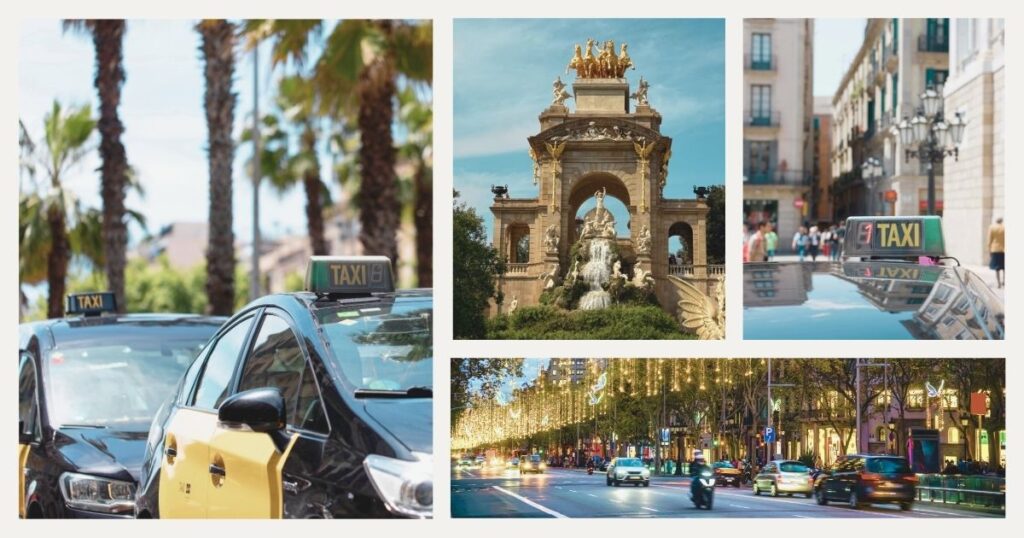
Barcelona operates a well-regulated taxi system with distinctive features that distinguish legitimate services from unauthorized alternatives. The city’s official taxis maintain consistent standards for safety, pricing, and service quality that benefit both residents and visitors. Learning how to get a taxi in Barcelona starts with recognizing these regulated services.
Recognizing official Barcelona taxis
Official Barcelona taxis display unmistakable black and yellow color schemes with clear identification numbers on doors and roofs. Licensed vehicles feature taxi lights on top that illuminate when available for hire. Each taxi displays official licenses and rate cards in multiple languages, ensuring transparency for international passengers.
💡 Did you know? Barcelona’s taxi fleet includes over 10,000 licensed vehicles, making it one of the largest taxi networks in Europe. This extensive coverage ensures you can usually find available taxis throughout most neighborhoods and times of day.
Licensed drivers must pass comprehensive training programs covering city geography, customer service, and language basics. Many drivers speak basic English, though learning a few Spanish phrases can enhance your taxi experience and help with specific destination instructions.
Official taxi rates and payment methods
Barcelona taxis operate on regulated meter systems with base fares starting around €2.40 during regular hours, with additional charges for luggage, airport trips, and late-night travel. Weekend and holiday rates include small surcharges clearly displayed on official rate cards.
🌟 Pro tip: always ensure the meter is running when your journey begins. Official taxis must use meters for all trips within Barcelona city limits, and any driver refusing to use the meter is likely operating illegally.
Modern Barcelona taxis accept multiple payment methods, including cash, credit cards, and contactless payments, though carrying small bills can expedite the payment process during busy periods.
Methods for getting taxis in Barcelona
Barcelona provides various convenient options for securing taxi transportation, each suited to different situations and preferences. Understanding these methods helps you choose the most appropriate approach based on your location, timing, and specific needs. Knowing how to get a taxi in Barcelona through multiple channels ensures you always have reliable options available.
Traditional street hailing
Street hailing remains the most straightforward method for getting taxis in busy Barcelona areas. Position yourself visibly on main streets or near major intersections where taxis frequently travel. Look for illuminated taxi lights indicating availability, and wave clearly to signal your need for transportation.
💡 Did you know? Barcelona law prohibits taxis from stopping in bus lanes, bike lanes, or restricted traffic zones. Choose hailing spots on regular traffic streets to avoid delays and ensure driver compliance with local regulations.
Taxi booking apps and technology
Smartphone applications have revolutionized how to get a taxi in Barcelona, offering convenience and enhanced safety features. Popular apps like Cabify, Uber, and Free Now operate throughout Barcelona, allowing advance booking and real-time tracking of your assigned vehicle.
These platforms provide estimated arrival times, driver information, and upfront pricing for many routes. App-based booking proves particularly valuable during peak hours, bad weather, or when departing from less central locations where street hailing might prove challenging.
Key locations and taxi stands in Barcelona
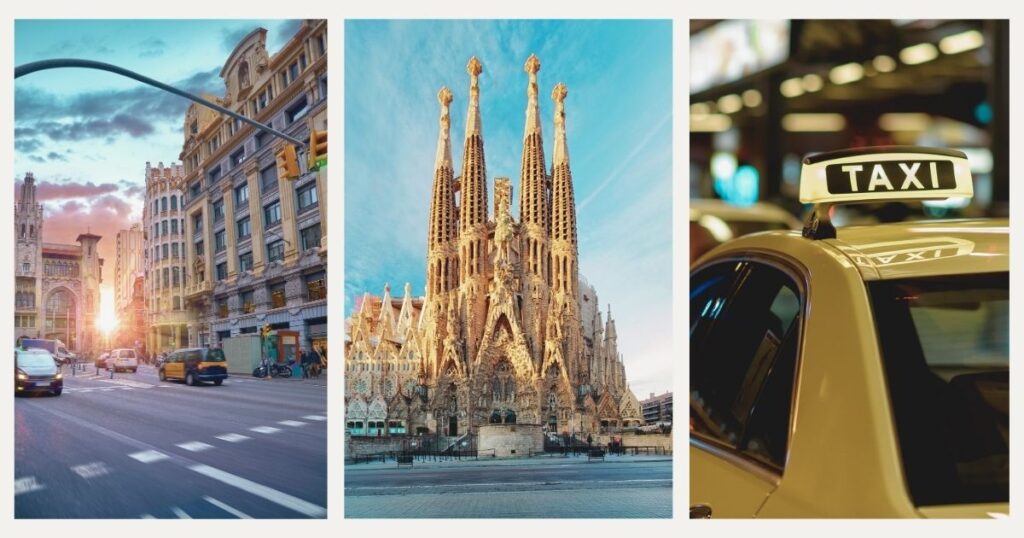
Strategic taxi stands throughout Barcelona provide reliable pickup points where vehicles queue to serve passengers. These designated areas offer consistent service and eliminate the uncertainty of street hailing in busy or unfamiliar neighborhoods.
Major tourist areas and transportation hubs
Barcelona’s main tourist attractions feature dedicated taxi stands for visitor convenience. Plaça de Catalunya serves as a central hub with multiple taxi queues serving different destinations. Las Ramblas, despite heavy pedestrian traffic, maintains several taxi pickup points along its length.
Barcelona-El Prat Airport provides extensive taxi services with dedicated ranks outside all terminals. The journey to central Barcelona typically takes 30-45 minutes, depending on traffic, with fixed rates available for airport trips to avoid meter confusion during longer journeys.
🌟 Pro tip: maintain reliable connectivity throughout Barcelona with Holafly’s seamless eSIM service, ensuring you can always access taxi apps, navigate to pickup points, and communicate with drivers regardless of your location in the city.
Sants Station, Barcelona’s main train terminal, features comprehensive taxi facilities serving passengers arriving from other Spanish cities and international destinations. The station’s taxi rank operates 24/7, accommodating early morning and late-night arrivals with consistent service availability.
Business districts and digital nomad hotspots
Barcelona’s business areas maintain excellent taxi accessibility for professionals and remote workers. The Eixample district, home to numerous coworking spaces and corporate offices, provides easy taxi access along its wide avenues and major intersections.
The Poblenou area, increasingly popular among digital nomads and tech companies, offers good taxi coverage despite being slightly removed from central tourist zones. Gothic Quarter navigation can challenge taxi access due to narrow medieval streets, but designated pickup points on major thoroughfares provide reliable service.
Avoiding common taxi scams and issues
Tourist-focused taxi scams exist in Barcelona, but awareness and preparation help you avoid problematic situations. Understanding common tricks and maintaining vigilance protects both your wallet and travel experience.
Identifying and avoiding fraudulent services
Unlicensed taxi operators occasionally target tourists near popular attractions and transportation hubs. These illegal services lack proper insurance, regulatory oversight, and fare protections available through official taxis. Always verify proper licensing before entering any vehicle claiming to provide taxi service.
💡 Did you know? Official Barcelona taxis must display their license number prominently on the vehicle exterior and provide official receipts upon request. Any vehicle lacking these features should be avoided, regardless of appearance or driver claims.
Fare disputes and overcharging prevention
Meter tampering represents a serious but uncommon issue in Barcelona’s regulated taxi system. Ensure the meter starts at the correct base fare and increases steadily throughout your journey. Significant variations from expected costs warrant immediate questioning and potential trip termination.
Some drivers attempt to exploit tourists through unnecessarily long routes or claims about meter malfunctions. Use smartphone navigation to monitor your route and speak up if the driver takes obvious detours without explanation or traffic justification.
🌟 Pro tip: photograph the taxi’s license number before beginning your journey. This simple precaution provides accountability and assists with complaint resolution if problems arise during or after your trip.
Special considerations for digital nomads
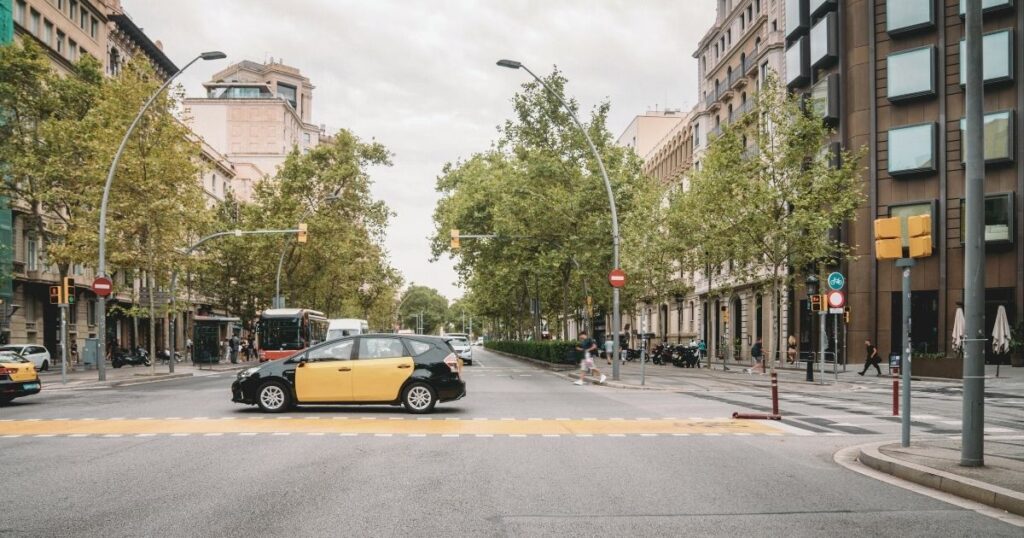
Remote workers in Barcelona face unique transportation needs that standard tourist advice doesn’t always address. Understanding these specific requirements helps optimize your taxi experience for professional and practical situations. Digital nomads who learn how to get a taxi in Barcelona effectively can maintain productivity while exploring the city.
Traveling with work equipment
Digital nomads often carry valuable laptops, cameras, and other professional equipment, requiring extra security precautions during taxi travel. Choose secure seating positions that allow monitoring of your belongings while maintaining a comfortable working posture during longer journeys.
Many Barcelona taxis provide spacious trunks suitable for multiple bags and work equipment. However, keep essential items like laptops and important documents with you in the passenger compartment rather than storing them in the trunk, where access remains limited.
Communication with drivers about valuable cargo ensures they understand your security concerns and drive accordingly. Most professional drivers appreciate passenger awareness about equipment safety and adjust their driving style for delicate electronics or important work materials.
Late-night and early morning transportation
Barcelona’s digital nomad community often works non-traditional hours, requiring reliable late-night and early-morning transportation options. The city’s taxi network operates 24/7, though availability varies significantly during overnight hours and may require longer waiting times.
App-based booking becomes particularly valuable during off-peak hours when street hailing proves less reliable. Schedule rides in advance for early morning flights or important meetings to ensure timely arrival without transportation stress.
Weekend nights see increased taxi demand due to Barcelona’s vibrant nightlife scene. Plan accordingly by allowing extra time for pickup during Friday and Saturday evenings when both tourists and locals compete for available vehicles.
Alternative transportation and cost considerations
Understanding how taxis complement Barcelona’s broader transportation network helps you make informed decisions about when taxi use provides the best value and convenience compared to other available options. Smart travelers who understand how to get a taxi in Barcelona also know when alternative transport might serve them better.
Barcelona’s excellent metro and bus systems often provide faster, more economical transportation than taxis for routine journeys. However, taxis excel in door-to-door service, heavy luggage transport, and routes poorly served by public transit. Consider using taxis for first and last-mile connections to metro stations when carrying work equipment.
Taxi costs in Barcelona vary significantly based on distance, time of day, and traffic conditions. Short trips within central Barcelona typically cost €6-12, while longer journeys to areas like Poblenou or airport transfers can reach €25-40. Compare taxi expenses against public transport costs to determine optimal transportation choices for different situations.
💡 Did you know? Barcelona offers tourist transportation cards that include both public transit and taxi discounts. These integrated packages can provide savings for visitors planning multiple taxi trips alongside regular metro and bus usage.
Mastering how to get a taxi in Barcelona transforms your city navigation from stressful uncertainty into confident mobility. Whether you’re heading to client meetings, exploring neighborhoods, or managing airport transfers, these strategies ensure reliable transportation that supports your digital nomad lifestyle. Barcelona’s comprehensive taxi system, combined with modern booking technology, provides the flexibility and convenience that remote workers need to thrive in this dynamic city.
For comprehensive guidance on all aspects of transportation and living as a digital nomad, explore our detailed guide to transport options for digital nomads, covering everything from budget planning to international travel strategies.
Let Nomada simplify every aspect of your nomadic journey with expert advice and practical solutions. 🌟
Frequently asked questions about getting taxis in Barcelona
Most taxi rides within central Barcelona cost between €6-15, depending on distance and traffic. Airport transfers typically range from €25-40, while short hops between nearby neighborhoods usually cost €5-8. Rates increase slightly during late-night hours and weekends.
While not legally required, many Barcelona taxi drivers speak basic English, especially those working in tourist areas. Learning key Spanish phrases like your destination address can help ensure clear communication and demonstrate respect for local culture.
Yes, several apps allow advance booking, including Cabify and Free Now. Many hotels also provide taxi booking services for guests. Booking 24 hours ahead ensures availability for early flights, though immediate booking usually works well except during peak travel periods.
Note the taxi’s license number and report issues to Barcelona’s taxi authority or tourist police. Most problems resolve through calm discussion, but documentation helps with formal complaints. Official receipts provide important evidence for dispute resolution.
Barcelona taxis are generally very safe, with licensed drivers undergoing background checks and vehicle inspections. Solo travelers should still follow basic safety precautions like sharing trip details with others and sitting behind the driver when traveling alone at night.
